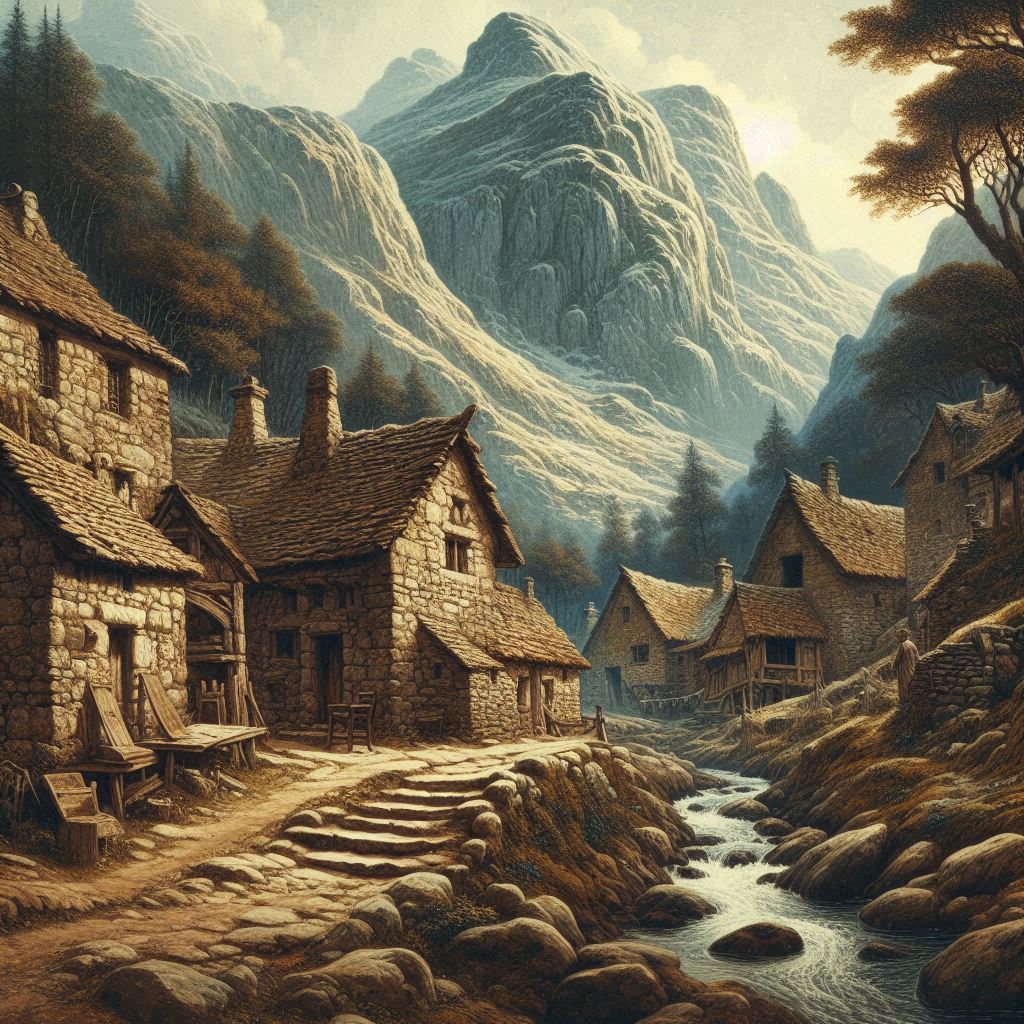Shadowland Zone
Legend
“From these shadows, many a mighty character as a hero has emerged.”
Description

The Shadowlands are a region of stark contrasts, nestled between the temperate Mildmarsh and the frigid peaks of The Rim. A realm of towering mountains, deep valleys, and rushing rivers, it is a place where the elements are often at their most dramatic. Temperatures fluctuate wildly between day and night, and the seasons are marked by stark differences.
Characterised by a climate that is a blend of temperate and highland, the Shadowlands offer a unique environment. Summers here are often mild, with warm days and cool nights. However, winters are harsh, with heavy snowfall and biting winds. Precipitation is abundant, especially in the higher elevations, where orographic lift creates a wetter climate.
The region’s topography has a profound impact on its weather. Valleys can experience warmer temperatures and milder conditions, while exposed peaks are often subject to extreme cold and wind. Fog and mist are common occurrences, creating an ethereal atmosphere.
The Shadowlands are home to a diverse range of ecosystems, from dense coniferous forests in lower elevations to alpine meadows and rocky outcrops higher up. Rivers and lakes carve their way through the mountains, providing life-giving water to the region.
Skjald Sejrik
Cartography
Shadowland climates include areas such as southern Dalip, West Fjella, East Fjella, and central Darin.
Average Temperature Range: Generally cooler than temperate zones due to higher altitude. Significant temperature variations between day and night, as well as between sun-exposed and shaded areas. Cold winters with heavy snowfall and mild to cool summers.
Precipitation Patterns: Higher precipitation levels compared to surrounding lowlands, often in the form of snow or rain. Orographic lift can lead to heavy rainfall on windward slopes and drier conditions on leeward sides. Potential for fog and mist due to the interplay of warm and cold air masses.
Wind Patterns: Strong and often gusty winds due to the mountainous terrain. Predominant wind direction is influenced by the larger climate patterns of the region.
Vegetation:
- Coniferous forests at lower elevations.
- Alpine meadows and tundra at higher altitudes.
Wildlife:
- Diverse wildlife adapted to mountainous terrain, including mountain goats, ibex, marmots, and eagles.
- Potential for endemic species due to isolation of mountain ranges.
N-Erectus Adaptations:
- Physical adaptations for climbing and navigating mountainous terrain.
- Specialised hunting and gathering techniques for mountain environments.
- Magical or supernatural abilities related to mountains or storms.
- Fur or body fat for insulation in colder regions.
Human Adaptations:
- Construction of sturdy shelters to withstand harsh weather conditions.
- Development of agriculture in suitable valleys and terraces.
- Reliance on herding and hunting for sustenance.
- Adaptation to high altitude living, including coping with altitude sickness.
Skjald Ulrich
Special
Shadows so long… chilling so strong… ending easily a heroes song.
Skjald Kazumix
Last Updated on 2024-08-10 by IoM-Christian
